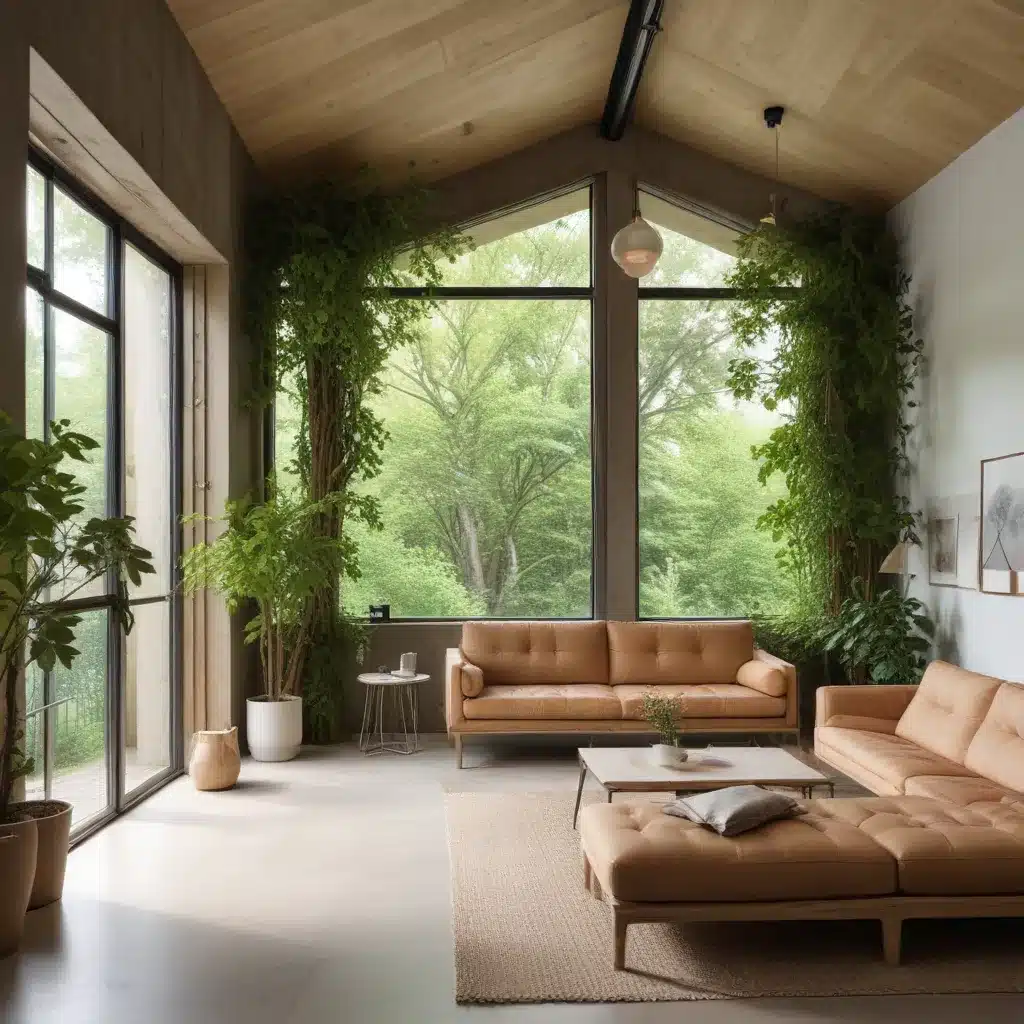
In our increasingly urbanized and technology-driven world, the importance of connecting with nature has never been greater. Biophilic design, a concept that integrates natural elements into the built environment, is gaining momentum as a way to create more harmonious and balanced living spaces. By harnessing the soothing essence of nature, this holistic approach can transform your home into a sanctuary that enhances your well-being, productivity, and overall quality of life.
The Principles of Biophilic Design
Biophilic design is rooted in the idea that humans have an innate connection to nature and thrive when they are in proximity to natural elements. This design philosophy seeks to strengthen this connection by incorporating natural materials, patterns, and features into interior spaces.
Incorporating Natural Elements
The use of natural materials like wood, stone, and bamboo is a key aspect of biophilic design. These materials bring texture, warmth, and an authentic natural feel to the space. Maximizing natural light through large windows, skylights, and glass doors is crucial, as it not only reduces the need for artificial lighting but also creates a more open and inviting atmosphere. Incorporating living plants, both large and small, adds a refreshing touch of greenery to interiors, improving air quality and infusing spaces with vitality.
The Benefits of Biophilic Design
Biophilic design has been shown to reduce stress levels, lower blood pressure, and improve overall mental well-being. The presence of natural elements can have a calming and soothing effect, promoting relaxation and enhancing cognitive function. In workspaces, biophilic elements can boost productivity and creativity by creating a more inspiring and refreshing environment.
Connecting with Nature Indoors
Framing views of outdoor landscapes, such as gardens, parks, or bodies of water, connects inhabitants with the natural world and provides a sense of tranquility. Maximizing natural light can also lead to reduced energy consumption, as artificial lighting and heating may be required less frequently during the day.
Integrating Nature into Your Renovation
When planning your renovation, consider incorporating biophilic design principles to create a harmonious and rejuvenating living space. From plant-centric design to maximizing natural light, there are numerous ways to bring the outdoors in and foster a deeper connection with nature.
Plant-Centric Design
Create indoor gardens or green walls with an assortment of plants, from small succulents to large potted trees. Incorporate native plants that thrive in your local climate to enhance the authenticity of your biophilic environment. These plants not only add visual interest but also improve air quality and provide a direct link to the natural world outside your home.
Natural Textures and Materials
Incorporate natural materials like wooden furniture, stone countertops, and bamboo flooring to add warmth and texture to your home. These elements create a tactile connection with nature and contribute to the overall biophilic aesthetic.
Maximizing Natural Light
If possible, install larger windows or sliding glass doors to maximize natural light and provide unobstructed views of the outdoors. Consider using light shelves or reflective surfaces to bounce light deeper into your space, creating a more even and natural illumination throughout the day.
Biophilic Design Strategies
To fully embrace the principles of biophilic design, explore innovative ways to integrate nature-inspired elements into your renovation. From vertical gardens to water features, these strategies can transform your living spaces into harmonious, nature-infused sanctuaries.
Vertical Gardens and Green Walls
Incorporate vertical gardens or living walls to bring lush greenery and a sense of natural abundance to your home. These installations not only add visual interest but also act as natural air purifiers, improving indoor air quality.
Water Features and Aquatic Elements
The soothing sounds and visual appeal of water features, such as indoor fountains or small tabletop aquariums, can create a tranquil atmosphere and connect your living spaces to the natural world.
Biophilic Furniture and Decor
Accessorize your rooms with nature-inspired artwork, organic-shaped furniture, and textiles featuring natural patterns to evoke the feeling of being in nature. These decorative elements can act as subtle reminders of your connection to the outdoors.
Creating a Holistic Biophilic Environment
To fully embrace the benefits of biophilic design, it’s essential to create a harmonious, nature-infused environment that engages all the senses. By layering natural aesthetics, promoting sensory engagement, and optimizing spatial configurations, you can transform your home into a sanctuary that nurtures your well-being.
Layering Natural Aesthetics
Combine various biophilic elements, such as plants, natural materials, and water features, to create a visually rich and immersive environment. This layered approach can enhance the sense of connection with nature and prevent your space from feeling like a mere collection of individual features.
Promoting Sensory Engagement
Engage multiple senses by incorporating the sights, sounds, and even scents of nature. The gentle sounds of a water feature, the aroma of fragrant plants, and the tactile experience of natural textures can all contribute to a deeply restorative and grounding experience.
Optimizing Spatial Configurations
Consider open floor plans that flow seamlessly from indoor to outdoor spaces, creating a harmonious transition between the two. Strategically place furniture and decor to frame views of nature and allow for easy movement and exploration within your biophilic environment.
As the world continues to urbanize, biophilic design offers a way to maintain our essential bond with the natural world, making our homes not just places to live but spaces to thrive. By incorporating natural elements, patterns, and materials into your renovation, you can create an environment that nurtures your connection with nature, reduces stress, and enhances your overall quality of life. Embrace the transformative power of biophilic design and bring the restorative essence of the outdoors into your home.
For more inspiration and expert guidance, visit Reluctant Renovator – your go-to resource for budget-friendly, eco-conscious, and family-friendly home improvement ideas.



